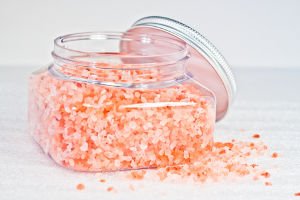
In our homes water is the medium that carries materials from one place to another – doing the job well by suspending or dissolving. While water is in the ground it absorbs minerals such as calcium and magnesium which are essential to the water’s ability to function properly – but they make our water hard. The solution to this problem is to get rid of these minerals with a water softener – take a look at how water softening systems work here…
Water Softener Explained
This mechanical appliance is plumbed into your home water supply system – all water systems use the same operating principle that trades minerals for salt – known as the ion exchange. The heart of the water softener is a mineral tank – filled with small polystyrene beads that carry a negative charge.
Calcium and magnesium carry positive charges – as the hard water passes through the mineral tank the minerals will cling to the beads. When a strong salt solution is flushed through the tank with the coated beads the minerals will be washed away. Water softeners have a separate brine tank that uses common salt to create the brine solution. Now you know where does the salt go in a water softener.
Types of Controls
The majority of water softeners have an automatic regenerating system that has an electric timer to lush and recharge the system on a regular schedule – during this process soft water isn’t available. Should there be water in the water softener tank? The automatic system will ensure the quantity is just right.
Another type of control is with the use of a computer that watches how much water is used. When enough water has passed through the mineral tank to have depleted the number of sodium beads the computer triggers the regeneration – and some soft water will be available during the recharging process.
Control type number three is the use of a mechanical water meter to measure water usage and initiate charging. There aren’t any electrical components required and the mineral tank is only recharged as necessary – and softened water stays available throughout.
Water Softener in Dishwashers
The water softener in dishwashers works by exchanging hard water ions for sodium ions – that don’t interfere with the wash process. The water passes through an ion exchange resin which looks like brown sugar. Over time the water softener must be regenerated – and this is done by adding sodium chloride also known as salt.

When the resin needs the added salt a valve will be opened and a small header tank of water will empty into the salt container to displace the salt solution. The salt in the resin will now flow into the machine and be pumped straight out of the drain. This procedure is carried out when the wash pump is switched off so as not to come into contact with the wash load.
Without a Water Softener
- Soaps and detergents lose their effectiveness
- Washed hair appears dull and lifeless
- Dirt can be trapped in fibres in your automatic washing machine
- Insoluble soap deposits can be left in your bath and shower
- Hard water can affect your plumbing system reducing flow to taps and appliances
Benefits of A Water Softener
- Using a water softener in your dishwasher will ensure that limescale will be kept at bay
- There won’t be any white deposits on your china or glasses
- With the addition of pure salt, your appliance will remain in good working order
- Your dishwasher will enjoy a longer service life when you understand how to use a water softener salt
Got a Water Softener System Issue?
For any appliance repairs that need a professional fix with regards to water softener systems simply call in the services of Mix Repairs.



